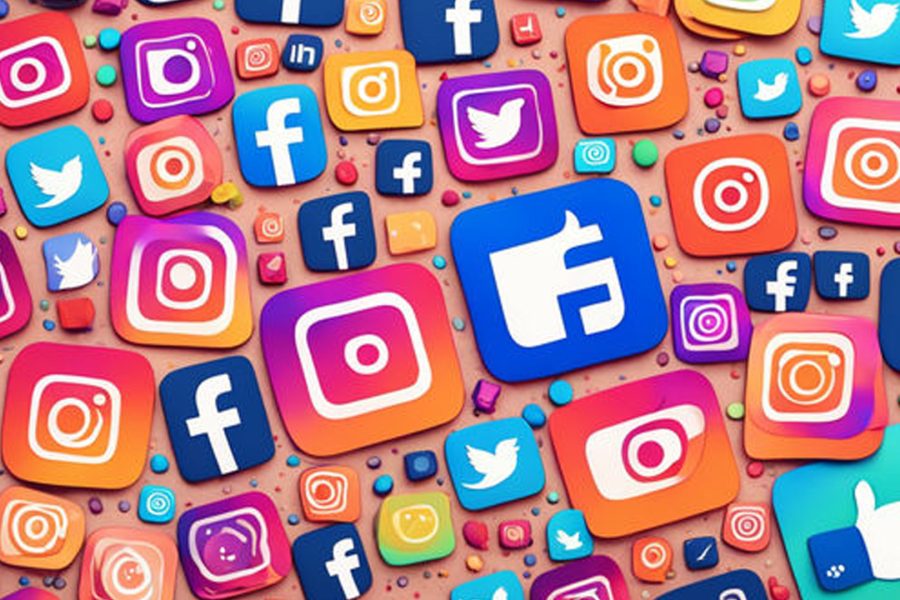The COVID-19 pandemic reshaped the world in numerous ways, affecting every aspect of life, including how businesses operate. Amid the chaos and uncertainty, social media emerged as a vital tool for businesses to survive, adapt, and thrive. This article explores the significant role social media played for businesses during the COVID-19 pandemic.
Maintaining Customer Connections
One of the immediate challenges businesses faced during the pandemic was the sudden disruption of direct customer interactions due to lockdowns and social distancing measures. Social media became a crucial platform for maintaining these connections. Through platforms like Facebook, Instagram, and Twitter, businesses could communicate updates, share changes in operations, and engage with customers in real-time. This helped maintain customer trust and loyalty during uncertain times.
Facilitating E-Commerce Growth
With physical stores closed or operating under strict limitations, many businesses turned to e-commerce to sustain sales. Social media platforms facilitated this transition by integrating shopping features. Facebook and Instagram Shops, for example, allowed businesses to set up online storefronts directly on their social media profiles. These features provided a seamless shopping experience for customers, driving e-commerce growth even among businesses that had previously relied on brick-and-mortar sales.
Enhancing Customer Service
The surge in online activity during the pandemic increased the demand for efficient customer service. Social media platforms enabled businesses to offer timely support through direct messaging and comments. Automated responses and chatbots became popular tools for handling common queries and issues, ensuring that businesses could manage the influx of customer interactions without compromising service quality.
Promoting Health and Safety Measures
As health and safety became paramount, businesses used social media to inform customers about the measures they were taking to protect them. Restaurants shared information about enhanced cleaning protocols and contactless delivery options, while retail stores posted updates about mask mandates and social distancing practices. These communications helped reassure customers and encouraged them to continue supporting businesses that prioritized their well-being.
Adapting Marketing Strategies
Traditional marketing strategies were no longer viable during the pandemic, leading businesses to innovate and adapt. Social media marketing became the focal point, with businesses leveraging creative content to engage audiences confined to their homes. Live streams, virtual events, and interactive posts became popular methods for keeping customers entertained and connected. Influencer partnerships also saw a rise, as influencers could authentically communicate brand messages to their followers during this time.
Building Community and Solidarity
Social media also served as a platform for businesses to foster a sense of community and solidarity. Many businesses launched initiatives to support frontline workers, local communities, and other small businesses. These efforts were widely shared and celebrated on social media, enhancing brand image and demonstrating corporate social responsibility. Campaigns that promoted unity and compassion resonated deeply with audiences, creating lasting positive impressions.
Leveraging Data and Insights
The increased reliance on social media during the pandemic provided businesses with valuable data and insights. Analytics tools offered detailed information about customer behavior, preferences, and trends. Businesses used this data to refine their strategies, tailor their content, and make informed decisions. The ability to quickly adapt to changing circumstances and customer needs proved crucial for survival and growth.
Facilitating Remote Work and Collaboration
For businesses that shifted to remote work, social media and digital communication tools became essential for internal collaboration. Platforms like Slack, Microsoft Teams, and Zoom, while not traditional social media, offered social features that kept teams connected and productive. These tools facilitated virtual meetings, project management, and team building activities, helping businesses maintain operational continuity.
Case Studies of Success
Numerous businesses successfully harnessed the power of social media during the pandemic. For example, fitness brands like Peloton saw exponential growth by offering virtual workout classes streamed via social media. Local restaurants pivoted to online orders and promoted their services through Instagram and Facebook, reaching customers despite physical closures.
Conclusion
The COVID-19 pandemic underscored the importance of social media for businesses. It provided a lifeline for maintaining customer connections, facilitating e-commerce, enhancing customer service, and promoting health measures. By adapting marketing strategies and leveraging data insights, businesses navigated the challenges of the pandemic. As the world moves forward, the lessons learned during this period will continue to shape the future of social media marketing, ensuring businesses remain resilient and adaptable in the face of any crisis.







